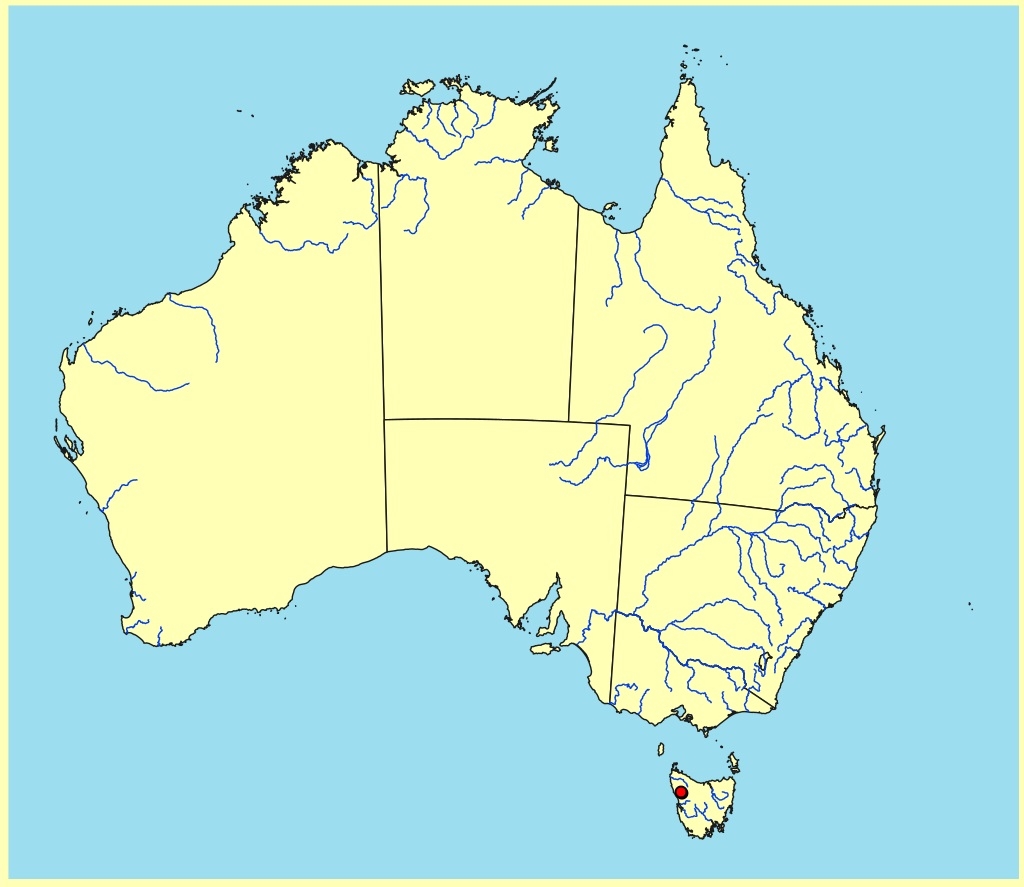Serpentine peppermint
Euclid - Online edition
Eucalyptus nebulosa
Eucalyptus | Eucalyptus | Aromatica | Insulanae
Eucalyptus nebulosa A.M. Gray, Kanunnah 3: 42 (2008).
T: Tasmania: Serpentine Ridge just North of the Pieman Road, ca 7 km west of the Huskisson River, 41º42'S 145º24'E, A.M. Gray 1368 , 6 May 2004. Holotype: HO; isotypes: AD CANB MEL NSW.
Small tree to 7 m tall. Forming a lignotuber.
Bark smooth, seasonally powdery, creamy white to yellowish and greeny bronze, shedding in short ribbons.
Juvenile growth (coppice or field seedlings to 50 cm): stem rounded in cross-section, conspicuously warty, reddish but with some wax; juvenile leaves opposite and usually sessile for many nodes (occasionally a short petiole to 0.2 cm), elliptical, 2.5–4.5 cm long, 1–2.5 cm wide, base rounded, margin entire, apex acute to apiculate, concolorous, bluish grey to glaucous.
Adult leaves alternate, petiole 0.9–2.0 cm long; blade elliptical to falcate, 4.5–11 cm long, 0.8–1.5 cm wide, base tapering to petiole, margin entire, apex pointed, concolorous, dull, blue-grey to glaucous, side-veins acute, reticulation sparse, intramarginal vein parallel to and close to margin, oil glands island.
Inflorescence axillary unbranched, peduncles 0.2–0.9 cm long, buds 7, 9 and 11 per umbel, sessile or with pedicels to 0.3 cm long. Mature buds clavate, ca 0.3–0.5 cm long and 0.2–0.3 cm wide, slightly glaucous, scar absent, operculum rounded with a nipple at top or not, stamens irregularly flexed, anthers reniform to cordate, versatile, dorsifixed, dehiscing by confluent slits, style short, stigma tapered, locules 3, 4 or 5, the placentae each with 2 vertical ovule rows. Flowers creamy white.
Fruit sessile or on pedicels to 0.3 cm long, hemispherical or weakly obconical, 0.3–0.5 cm long, 0.3–0.6 cm wide, disc usually level, valves 3, 4 or 5, near rim level.
Seeds brown to reddish brown, 1.2–2 mm long, pyramidal or obliquely pyramidal, dorsal surface smooth, hilum terminal.
Cultivated seedlings (measured at ca node 10): (not grown): cotyledons reniform.
Flowering has been recorded from December to March (A.M. Gray, ibid.)
A small peppermint tree endemic to Tasmania and known only from a couple of sites in hilly country north-west of Rosebery, where restricted to ridges in areas of serpentine geology. It occurs in a pure stand in one area. Bark is entirely smooth and the crown conspicuously blue-grey; buds are small and club-shaped like many peppermint species and the fruit are small and more or less hemispherical with a flat disc; juvenile leaves (coppice) are elliptical with a rounded base and are blue-grey.
In the classification of Brooker (2000) the more recently published Eucalyptus nebulosa belongs in Eucalyptus subgenus Eucalyptus section Aromatica (the peppermints) because the buds have a single operculum, anthers are reniform, ovules are in two rows, seeds are more or less pyramidal, adult leaf venation is acute and juvenile leaves are sessile and opposite for many pairs. Within this section, E. nebulosa belongs to an endemic Tasmanian series of seven species, series Insulanae, with the other species being E. nitida (rough-barked with green crown of lanceolate leaves), E. pulchella (smooth-barked with very narrow-leaved green crown), E. amygdalina (rough-barked with green crown of narrow lanceolate leaves and narrow juveniles), E. tenuiramis (smooth-barked with glaucous branchlets and a crown of mixed alternate, petiolate, adult leaves and opposite, petiolate, intermediate leaves), E. risdonii (smooth-barked but with a glaucous crown of opposite, sessile, often basally connate juvenile leaves), and E. coccifera (smooth-barked species of cold, high areas, with glaucous branchlets and elliptical to cordate (non-connate) juvenile leaves, a crown of fully adult, elliptical to lanceolate green leaves and warty buds in clusters of 3, 7 or 9).
Eucalyptus nebulosa grows within the wide distribution of E. nitida but is easily distinguished from it by the combination of smooth bark, slightly waxy branchlets and grey-blue crown and juvenile leaves. E. nitida may be smooth-barked but always has a glossy green crown and never has waxy branchlets.
Eucalyptus nebulosa: from the Latin nebulosus meaning misty or cloudy, a reference t the greyish blue crown colour of this species.






